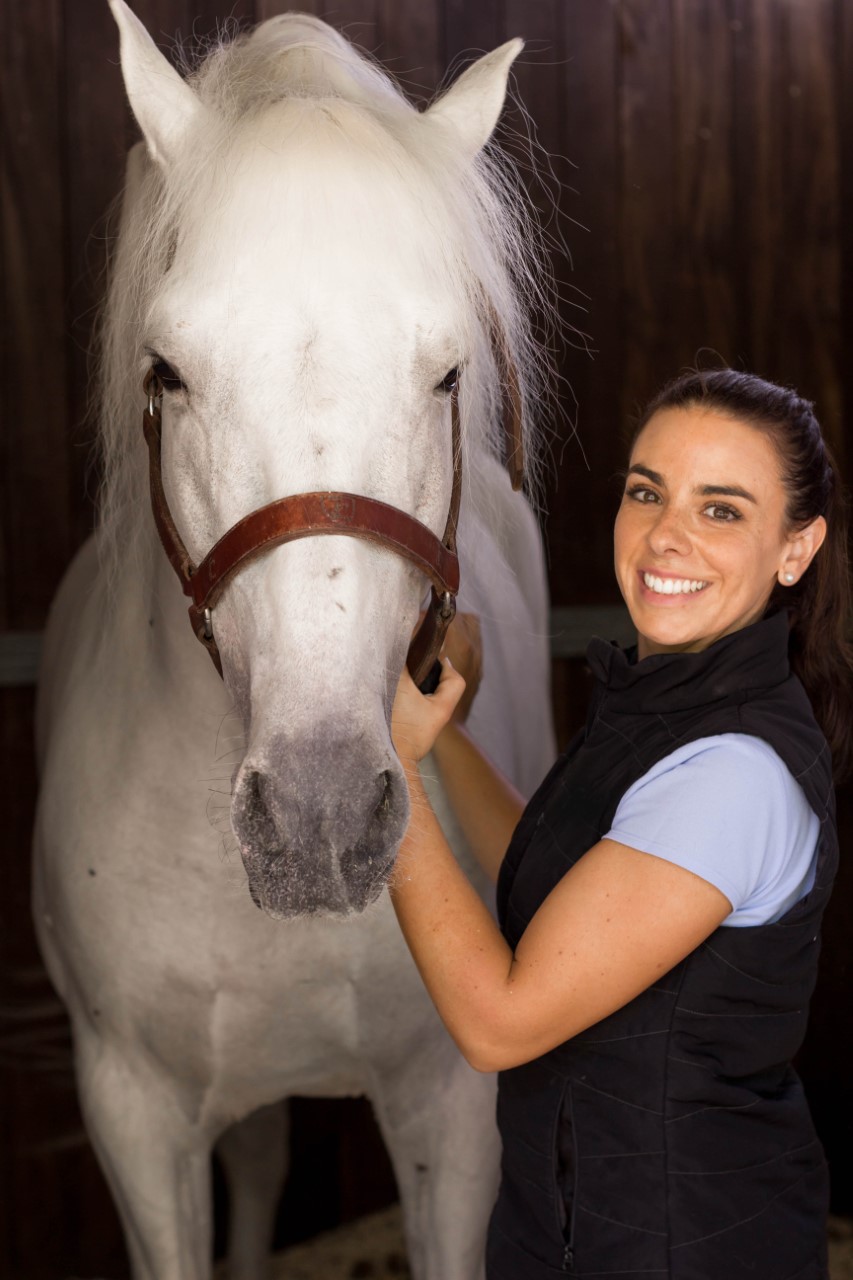 Equine physiotherapists provide advice to detect pain and loss of function and / or performance caused by physical injuries, joint disorder or instability. Once the causes have been determined through the multidisciplinary team of veterinarians, farriers and nutritionists; the specific physiotherapeutic treatment techniques for each case are applied with the aim of reestablishing movement and functionality allowing the horse to resume its optimal level of performance and maximum level of well-being.
Equine physiotherapists provide advice to detect pain and loss of function and / or performance caused by physical injuries, joint disorder or instability. Once the causes have been determined through the multidisciplinary team of veterinarians, farriers and nutritionists; the specific physiotherapeutic treatment techniques for each case are applied with the aim of reestablishing movement and functionality allowing the horse to resume its optimal level of performance and maximum level of well-being.
The main aim of Equine Physio Performance is to reach the level where deficiencies are no longer treated, but rehabilitation is aimed at dynamic stability (ability to maintain a certain position during a certain movement) and neuro-muscular control (precise muscle activation that enables the coordinated and effective development of an action).
This approach is revolutionary and it is based on the latest scientific advances since the rehabilitation process has evolved and focused on the stimulation of sensory receptors, specifically the Proprioceptors
These are structures that contain specialized nerve endings to detect certain types of sensations, such as position changes in space and angular velocity changes on a joint. Proprioceptors also act as transducers, that means they have the ability to transform stimulus into a nerve impulse. They are able to inform the brain about joint positioning, which entails controlling the activation of muscles stabilizers.
It is important to note that the proprioceptors are located in the joints, muscles, tendons and ligaments and it is essential to bear in mind that when one or more of the anatomical components mentioned above are injured, the sensory organs are also affected, so rehabilitation should be focused on the recovery of the affected structures and the stimulation of the sensory organs, in order to maximize performance and reduce the risk of possible future injuries.
All equine rehabilitation techniques are based on the same principles developed in human physiotherapy, which are based on reducing and / or eliminating pain, improving mobility, stability, strength and proprioception to optimize recovery, improve performance and functionality as well as reducing the risk of possible future injury.
Equine Physio Performance is one of the few equine physiotherapists who treat horses only with proven techniques such as the improvement of musculoskeletal balance through muscle motor control exercises, or the stretching of the local stabilizing muscles using the PNF techniques. Although we know that any manual technique will have an effect on the musculoskeletal system, it must be demonstrated if it is clinically relevant and if with our approach we can modify, modulate or alter in some way the adaptive balance of the alteration, therefore the methodology of action on any musculoskeletal involvement of Equine Physio Performance is the evaluation of the joint mobilization range in order to determine the weak joint axis and the affected muscles that should control the movement. Once the degree of musculoskeletal involvement has been determined, physiotherapy techniques are applied, the joint range is reassessed and the muscle stabilization capacity is verified.

